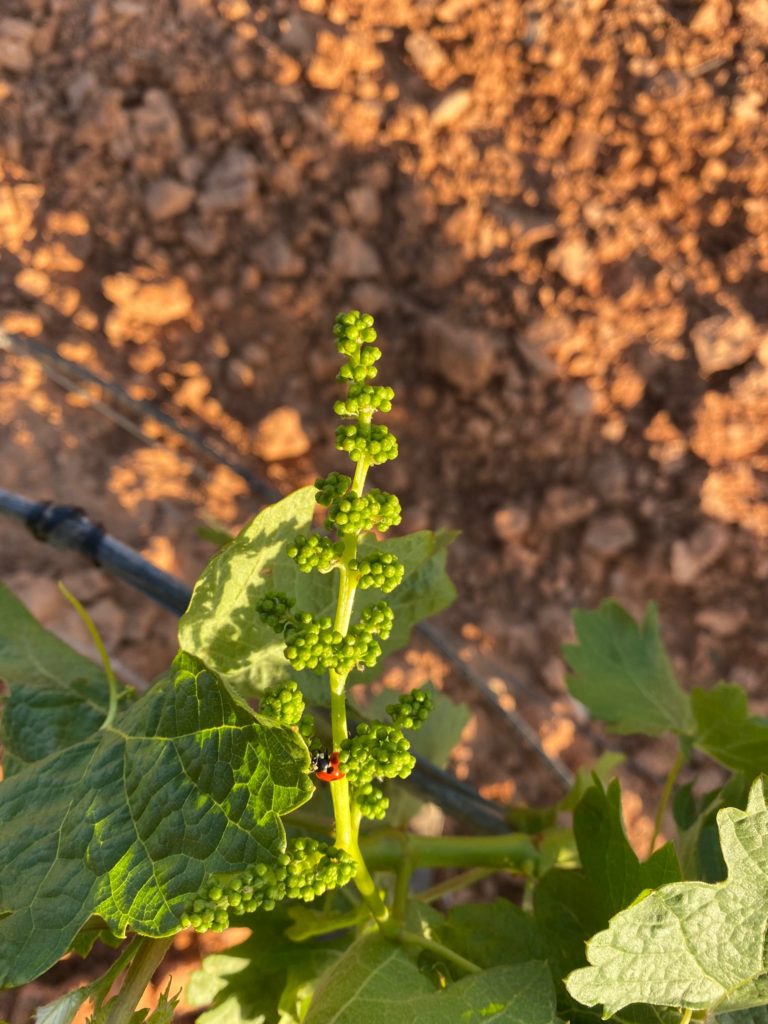In Coviñas, the buds of the flowers generally appear in the vineyards some time in May, and flowering then takes place. The small white flowers open, waiting to be pollinated by the wind and insects. Once the flower is pollinated, the individual grape berries begin to develop. This is a magical and spectacular display which the vineyard sets before us every year.
When flowering takes pleace, the plants need certain conditions, such as temperatures of around 15-20 °C, and lots of sunlight and little (all of which have been just right in the Utiel Requena area this spring). Without this, pollination will be affected, delaying the fruit set (‘cuajado’ in Spanish).
Fruit set, or “cuajado”, is another stage within the annual growth cycle of the vine, when the flower becomes a fruit, a grape. Not all the flowers turn into fruit. After the fruit set, the non-pollinated flowers simply disappear. This can mean a lower yield from the grapevine. Fruit set finishes two to three weeks after flowering. But if, on the other hand, there are too many bunches, thinning is carried out to remove bunches before they ripen, to get just the right amount for good ripening overall.
Most grapevine flowers are hermaphroditic and the opening of the flower is very distinctive. The petals separate at the base and the calyptra, or hood, is shed, pushed off by the stamens. After the flower opens, the anthers (pollen sacs) in turn open outwards and the pollen falls on the neighbouring flowers.
Grapevine flowers are pentamerous, consisting of five parts in each floral whorl:
-The calyx formed by five green sepals.
-Corolla, composed of five petals forming a cap
-The androecium, formed by five stamens
-And the gynoecium, formed by two fused carpels








